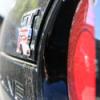MAP Sensor VS Air Flow Meter
Announcements
-
Similar Content
-
Latest Posts
-
Well, yes, every CU on the bus is available via the Consult port, but whether the scanner you are using is capable of talking to the TCU, the ABS/TCS modules, etc etc, is what is at question here. Many of them are only for engine codes. So, if you have one of those, you won't know if the ABS is having a bitch.
-
That's now. R chassis Skylines come from a time when the tolerance in the ADRs was a bit more....slack. My car, on 235/35-17, which is damn near the exact same size as the original 205/55-16, is pretty much bang on correct indicated speed across the whole legal range. That's demonstrated with constant speed run over 5km, and GPS speed. It's just the luck of the draw. My particular speedo head has to be the thing that is "calibrated" that way, because everything else (the diff ratio, the gearbox and the speedo drive**) are all same same as most other Skylines. **OK, so the speedo drive is a Navara unit to drive the R32's cable, not the electronic unit than an R33/4 would normally have with teh same gear on it. Otherwise, I applaud your OCD tendencies, and I would do the same if I needed to.
-
By RB25inside · Posted
Not too sure, I believe the Nissan consult port does everything? Also just filled up the reservoir to full and the light is still on. The float seems to move up and down fine. -
The speedo's can be very conservative, when my Mazda NC MX5 speedo is showing 118kph, the GPS, and a calibrated radar.... cop mate.....hits me at around 110kph +/- 1 or 2 kph, and that is on a 215/45 17, stock tyres size is 205/45 17 as well, so weirdly conservative with stock tyre size When my Commodore speedo red 116kph GPS had me at 110kph on 255/40 17, so again conservative Google says manufacturers need to set the speedo from 4 to 10% slower than actual road speed.....for safety.....and compliance After doing some offset and clearance measurements to see what can fit the NC on 17x8 +40, without guard rolling or rubbing anything at my current ride height, I've decided that when my tyres are toast, I'm going to fit 225/45 17 and see where that gets me IRT actual speed of my speedo and GPS/radar From the online calculator I should be still be doing around 5kph under an actual 110kph when the speedo is showing 110kph My ADHD requires that when I'm doing 110kph on the speedo, that the actual road speed is actually really close to that, and not alot slower And going from 205 to 225 still keeps the car within the %/mm allowable in the NSW vehicle rules and regulations, which is nice, as long as I'm looking at the latest version that is.....LOL https://www.nsw.gov.au/sites/default/files/2021-02/RMS-13.464-Light-vehicle-modifications-Vehicle-Standards-Information-No-6-November-2013.pdf
-
Take the value it measured as, and pick the closest range available that is above the reading on the screen. Also, no point just testing the coils. Read what has been said again. You need to test all your wiring, everything.
-








Recommended Posts
Create an account or sign in to comment
You need to be a member in order to leave a comment
Create an account
Sign up for a new account in our community. It's easy!
Register a new accountSign in
Already have an account? Sign in here.
Sign In Now